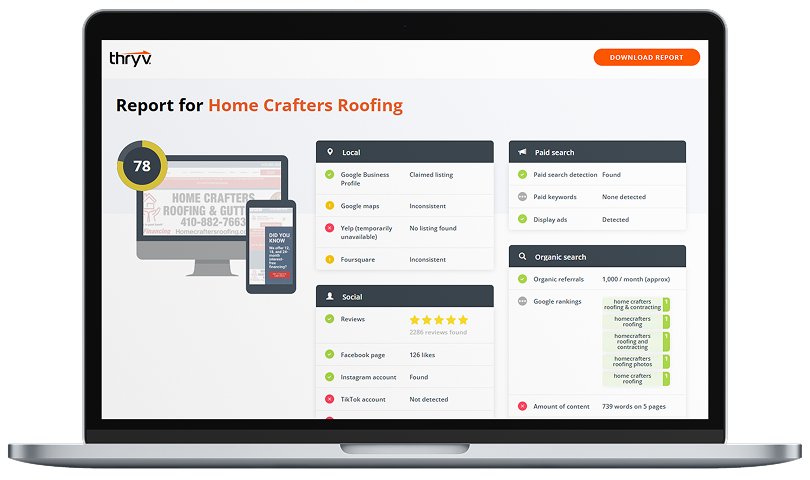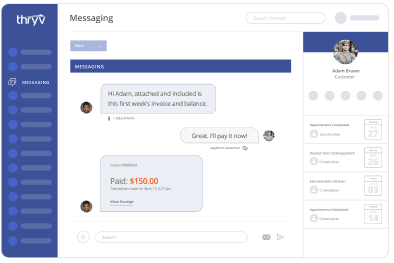As a career marketer, I’m well aware of both the challenges and rewards of creating a successful marketing campaign. What’s important to realize is that great marketing doesn’t come down to flashy campaigns or massive budgets; it comes from clarity, focus, and a real understanding of your ideal customer. And a lot of times, that’s where the small business advantage comes into play. You know your customers and your community better than your larger competitors likely do.
As a business owner, you juggle a dozen priorities, from operations to customer service to marketing. Your time is a precious commodity that must be spent wisely. So I’d like to share my three most important marketing tips to help you zero in on what truly drives business growth – how you attract, engage, and retain the customers who matter most.

Free eBook: Modern Small Business Playbook
Find expert tips and tools to help you streamline communications, automate your marketing efforts, improve your business operations, and more in this free guide.
Download
These three tips are drawn directly from proven strategies that drive business growth, whether a business has thousands or millions in revenue. They’ll help guide you to intentional decision-making and strengthen the foundation of your brand without needing a whole marketing department to back you up.
Marketing Tips for Small Businesses
1. Meet customers where they are.
2. Use data to drive smarter decisions.
3. Automate and personalize for scale.
1. Meet customers where they are.
The foundation of any successful marketing strategy is visibility, and in today’s world, visibility happens across multiple touchpoints. Modern consumers don’t stick to one platform; they move between social media, Google searches, email inboxes, and text messages before deciding to engage with a business. That’s why one of the best marketing tips for small business owners is to meet customers where they already are. The more consistently you show up in the places your audience spends their time, the more trust and recognition you’ll build.
When you diversify your outreach and stay consistent, you make it easier for customers to find, remember, and return to you. Here are some actionable ways to get started:
- Optimize your Google Business Profile so you appear in local search results when customers nearby look for your services. Make sure your business hours, photos, and reviews are accurate and up to date. These small details heavily influence local decision-making.
- Create a simple email list by collecting customer addresses at checkout, on your website, or through social media signups. Email remains one of the highest ROI marketing tools when used consistently.
- Maintain an active and authentic social media presence. You don’t need to post daily, but showing up regularly with relevant content (like behind-the-scenes photos, quick tips, or customer shoutouts) keeps your brand top of mind.
2. Use data to drive smarter decisions.
When it comes to marketing, “guessing” is expensive. Data should inform every decision you make, because what you track, you can improve. Too often, small businesses run ads, send emails, or post on social media without knowing what’s actually working. Setting up a few simple analytics tools can change that overnight. Even free tools like Google Analytics, Facebook Insights, or Thryv’s performance dashboard can show which channels are generating leads, how visitors find your website, and where they drop off.
Once you have that data, use it to refine your small business marketing strategies. If your paid ads drive clicks but not conversions, your landing page might need a tweak. If email campaigns generate sales, consider doubling your send frequency or segmenting your audience for better targeting. Data-driven marketing decisions help you identify high-performing campaigns and confidently trim what’s not producing results.
A practical next step: set one or two key performance indicators (KPIs) to measure monthly, such as website traffic, conversion rate, or cost per lead. Review those numbers regularly, even for 15 minutes a week. Over time, you’ll spot trends that reveal where to focus your efforts for the greatest return. It’s not about collecting endless data; it’s about turning insights into smarter action.
3. Automate and personalize for scale.
As your customer base grows, maintaining personal connections while keeping up with daily tasks becomes a balancing act. That’s where automation can transform your marketing from reactive to strategic. Tools like Thryv and Mailchimp make it easy to automate routine tasks such as appointment reminders, review requests, and follow-up emails, keeping your customers engaged without draining your time. Automated workflows ensure no lead slips through the cracks, and every client feels like a priority.
At the same time, personalization keeps automation from feeling robotic. Simple touches like addressing customers by name, referencing past purchases, or tailoring offers to their interests go a long way. For example, a landscaping business might automatically send seasonal maintenance reminders to past customers, while a salon could schedule follow-up texts three weeks after an appointment, offering a small discount for a return visit. These thoughtful touches build loyalty and turn one-time buyers into repeat clients.
To get started, map out the top three customer interactions that could be automated – think appointment confirmations, review follow-ups, or post-purchase thank-yous. Then, personalize each step with details that reflect your brand’s voice. This combination of automation and personalization doesn’t just save time, it scales your impact, helping your small business feel big without losing its local charm.
Turn Marketing Insights Into Everyday Wins
The best marketing strategies don’t require a corporate title or a massive budget; they come from consistency, clarity, and care. By meeting customers where they are, using data to guide every decision, and automating key tasks with a personal touch, small businesses can market smarter, not harder. These are the same principles marketers rely on to build brands that last, and they’re just as powerful for a team of one.
Start small: update your Google Business Profile, review your performance dashboard, and set up a few automated follow-ups. Each small improvement adds up to a stronger, more connected brand. And with tools like Thryv simplifying everything from analytics to automation, you can put these CMO-level strategies into action, without needing a marketing department to make it happen.

Modern Small
Business Playbook
Find expert tips and tools to help you streamline communications, automate your marketing efforts, improve your business operations, and more in this free guide.


